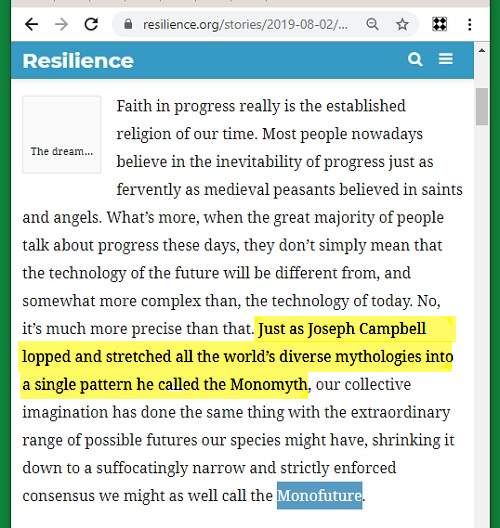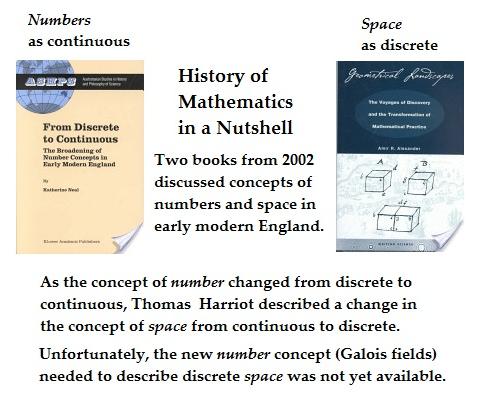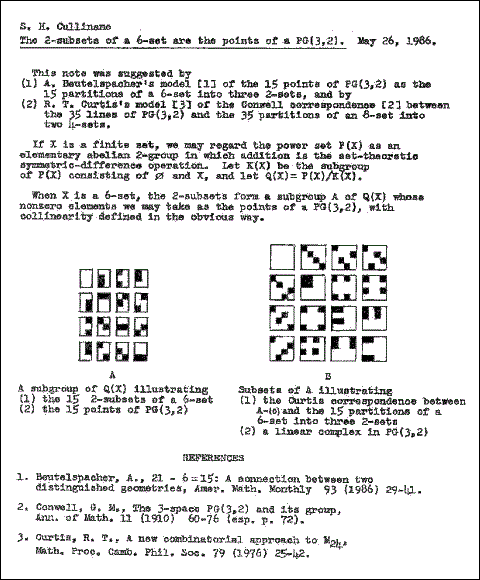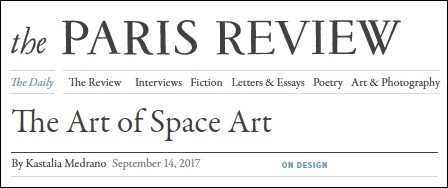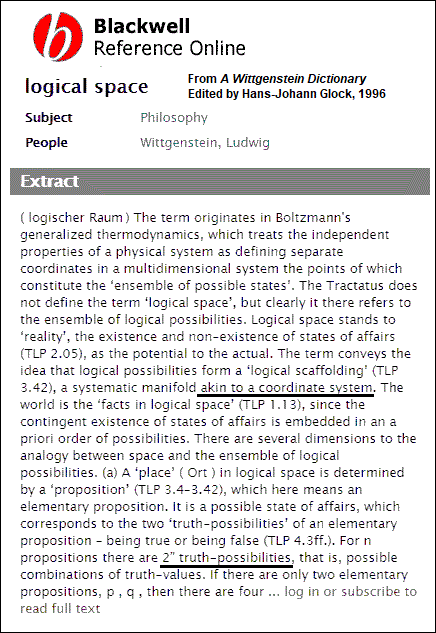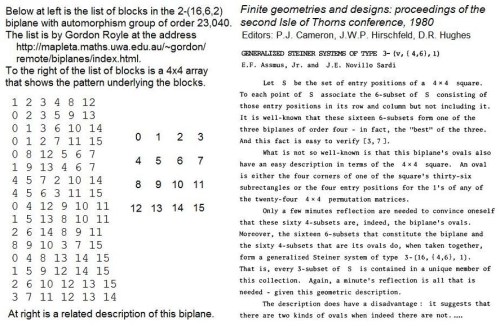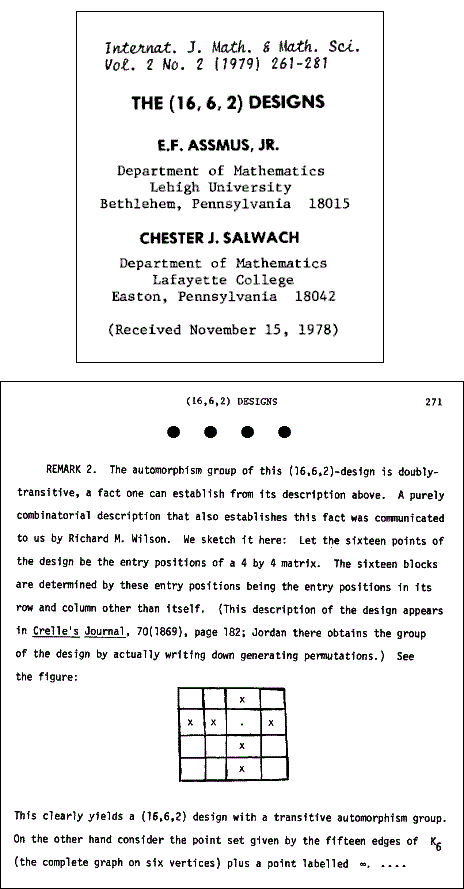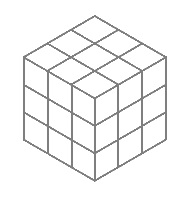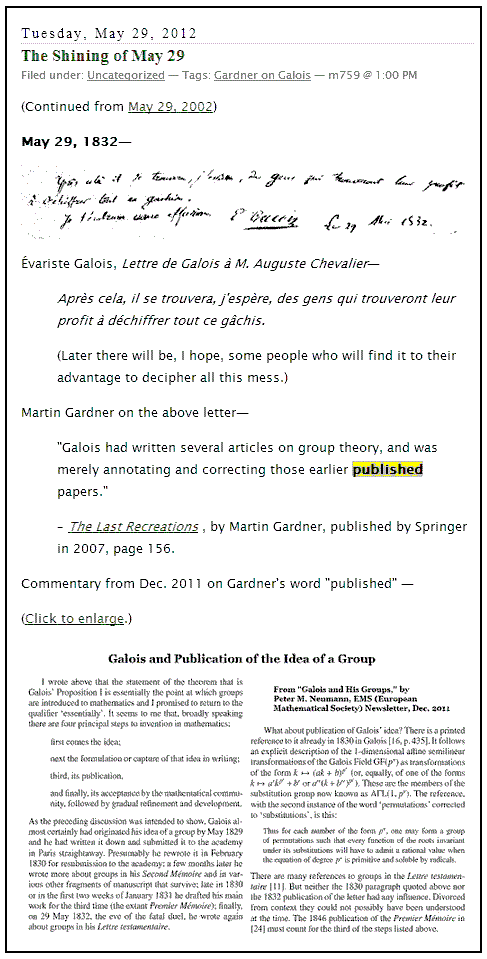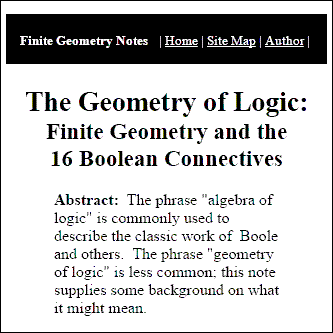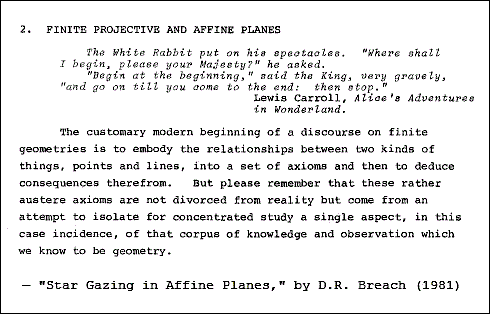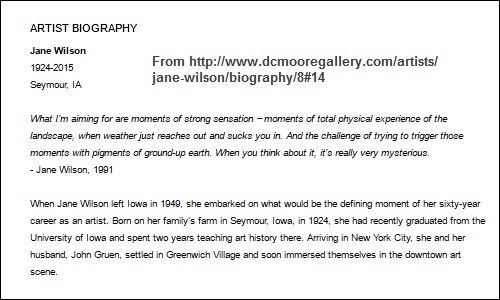Sunday, December 5, 2021
The Venn Lotus
Saturday, November 20, 2021
The Unmagicking
|
Unmagic Squares Consecutive positive integers:
1 2 3 Consecutive nonnegative integers:
0 1 2
Consecutive nonnegative integers
00 01 02
This last square may be viewed as
Note that the ninefold square so viewed
As does, similarly, the ancient Chinese
These squares are therefore equivalent under This method generalizes. — Steven H. Cullinane, Nov. 20, 2021 |
Monday, July 12, 2021
Educational Series
Saturday, May 8, 2021
A Tale of Two Omegas

The Greek capital letter Omega, Ω, is customarily
used to denote a set that is acted upon by a group.
If the group is the affine group of 322,560
transformations of the four-dimensional
affine space over the two-element Galois field,
the appropriate Ω is the 4×4 grid above.
See the Cullinane diamond theorem .
If the group is the large Mathieu group of
244,823,040 permutations of 24 things,
the appropriate Ω is the 4×6 grid below.

See the Miracle Octad Generator of R. T. Curtis.
Friday, February 12, 2021
Root
A star figure and the Galois quaternion.
The square root of the former is the latter.
(This post was suggested by the definition of
the Dirac operator as a square root.)
Thursday, December 17, 2020
In Memoriam
Composer Harold Budd reportedly died at 84 on December 8
in Arcadia, California.
"The way I work is that
I focus entirely on a small thing
and try to milk that for all it's worth,
to find everything in it
that makes musical sense,"
Budd explained in a 1997 interview….
See related remarks in posts now tagged Quartet,
as well as posts now tagged Galois Window.
Wednesday, December 16, 2020
Sunday, December 6, 2020
“Binary Coordinates”
The title phrase is ambiguous and should be avoided.
It is used indiscriminately to denote any system of coordinates
written with 0 ‘s and 1 ‘s, whether these two symbols refer to
the Boolean-algebra truth values false and true , to the absence
or presence of elements in a subset , to the elements of the smallest
Galois field, GF(2) , or to the digits of a binary number .
Related material from the Web —
Some related remarks from “Geometry of the 4×4 Square:
Notes by Steven H. Cullinane” (webpage created March 18, 2004) —
A related anonymous change to Wikipedia today —
The deprecated “binary coordinates” phrase occurs in both
old and new versions of the “Square representation” section
on PG(3,2), but at least the misleading remark about Steiner
quadruple systems has been removed.
Wednesday, November 11, 2020
Qube
The new domain qube.link forwards to . . .
http://finitegeometry.org/sc/64/solcube.html .
More generally, qubes.link forwards to this post,
which defines qubes .
Definition: A qube is a positive integer that is
a prime-power cube , i.e. a cube that is the order
of a Galois field. (Galois-field orders in general are
customarily denoted by the letter q .)
Examples: 8, 27, 64. See qubes.site.
Update on Nov. 18, 2020, at about 9:40 PM ET —
Problem:
For which qubes, visualized as n×n×n arrays,
is it it true that the actions of the two-dimensional
galois-geometry affine group on each n×n face, extended
throughout the whole array, generate the affine group
on the whole array? (For the cases 8 and 64, see Binary
Coordinate Systems and Affine Groups on Small
Binary Spaces.)
Monday, November 2, 2020
Q Bits
The new domain name q-bits.space does not refer to
the q in “quantum ,” but rather to the q that symbolizes
the order of a Galois field .
See the Wikipedia article “Finite field.”
The “space” suffix refers to a web page on geometry.
Tuesday, October 20, 2020
The Leibniz Methods
Click medal for some background. The medal may be regarded
as illustrating the 16-point Galois space.
Friday, September 11, 2020
Kauffman on Algebra
Kauffman‘s fixation on the work of Spencer-Brown is perhaps in part
due to Kauffman’s familiarity with Boolean algebra and his ignorance of
Galois geometry. See other posts now tagged Boole vs. Galois.
See also “A Four-Color Epic” (April 16, 2020).
Saturday, June 27, 2020
Saturday, May 30, 2020
Tuesday, May 26, 2020
Introduction to Cyberspace
Or approaching.
On the Threshold:
Click the search result above for the July 1982 Omni
story that introduced into fiction the term "cyberspace."
Part of a page from the original Omni version —
For some other kinds of space, see my notes from the 1980's.
Some related remarks on space (and illustrated clams) —

— George Steiner, "A Death of Kings," The New Yorker ,
September 7, 1968, pp. 130 ff. The above is from p. 133.
See also Steiner on space, algebra, and Galois.
Wednesday, April 15, 2020
Death Warmed Over
In memory of the author of My Time in Space * —
Tim Robinson, who reportedly died on April 3 —
See also an image from a Log24 post, Gray Space —
Related material from Robinson’s reported date of death —
* First edition, hardcover, Lilliput Press, Ireland, April 1, 2001.
Saturday, April 4, 2020
A Schicksalstag for the Author of The Eight
Thursday, April 2, 2020
Saturday, March 7, 2020
The “Octad Group” as Symmetries of the 4×4 Square
From "Mathieu Moonshine and Symmetry Surfing" —
(Submitted on 29 Sep 2016, last revised 22 Jan 2018)
by Matthias R. Gaberdiel (1), Christoph A. Keller (2),
and Hynek Paul (1)
(1) Institute for Theoretical Physics, ETH Zurich
(2) Department of Mathematics, ETH Zurich
https://arxiv.org/abs/1609.09302v2 —
"This presentation of the symmetry groups Gi is
particularly well-adapted for the symmetry surfing
philosophy. In particular it is straightforward to
combine them into an overarching symmetry group G
by combining all the generators. The resulting group is
the so-called octad group
G = (Z2)4 ⋊ A8 .
It can be described as a maximal subgroup of M24
obtained by the setwise stabilizer of a particular
'reference octad' in the Golay code, which we take
to be O9 = {3,5,6,9,15,19,23,24} ∈ 𝒢24. The octad
subgroup is of order 322560, and its index in M24
is 759, which is precisely the number of
different reference octads one can choose."
This "octad group" is in fact the symmetry group of the affine 4-space over GF(2),
so described in 1979 in connection not with the Golay code but with the geometry
of the 4×4 square.* Its nature as an affine group acting on the Golay code was
known long before 1979, but its description as an affine group acting on
the 4×4 square may first have been published in connection with the
Cullinane diamond theorem and Abstract 79T-A37, "Symmetry invariance in a
diamond ring," by Steven H. Cullinane in Notices of the American Mathematical
Society , February 1979, pages A-193, 194.
* The Galois tesseract .
Update of March 15, 2020 —
Conway and Sloane on the "octad group" in 1993 —

Thursday, March 5, 2020
“Generated by Reflections”
See the title in this journal.
Such generation occurs both in Euclidean space …
… and in some Galois spaces —
In Galois spaces, some care must be taken in defining "reflection."
Monday, February 24, 2020
Hidden Figure
Friday, February 21, 2020
Tuesday, January 28, 2020
Very Stable Kool-Aid
Two of the thumbnail previews
from yesterday's 1 AM post …
Further down in the "6 Prescott St." post, the link 5 Divinity Avenue
leads to …
|
A Letter from Timothy Leary, Ph.D., July 17, 1961
Harvard University July 17, 1961
Dr. Thomas S. Szasz Dear Dr. Szasz: Your book arrived several days ago. I've spent eight hours on it and realize the task (and joy) of reading it has just begun. The Myth of Mental Illness is the most important book in the history of psychiatry. I know it is rash and premature to make this earlier judgment. I reserve the right later to revise and perhaps suggest it is the most important book published in the twentieth century. It is great in so many ways–scholarship, clinical insight, political savvy, common sense, historical sweep, human concern– and most of all for its compassionate, shattering honesty. . . . . |
The small Morton Prince House in the above letter might, according to
the above-quoted remarks by Corinna S. Rohse, be called a "jewel box."
Harvard moved it in 1978 from Divinity Avenue to its current location at
6 Prescott Street.
Related "jewel box" material for those who
prefer narrative to mathematics —
"In The Electric Kool-Aid Acid Test , Tom Wolfe writes about encountering
'a young psychologist,' 'Clifton Fadiman’s nephew, it turned out,' in the
waiting room of the San Mateo County jail. Fadiman and his wife were
'happily stuffing three I-Ching coins into some interminable dense volume*
of Oriental mysticism' that they planned to give Ken Kesey, the Prankster-
in-Chief whom the FBI had just nabbed after eight months on the lam.
Wolfe had been granted an interview with Kesey, and they wanted him to
tell their friend about the hidden coins. During this difficult time, they
explained, Kesey needed oracular advice."
— Tim Doody in The Morning News web 'zine on July 26, 2012**
Oracular advice related to yesterday evening's
"jewel box" post …
A 4-dimensional hypercube H (a tesseract ) has 24 square
2-dimensional faces. In its incarnation as a Galois tesseract
(a 4×4 square array of points for which the appropriate transformations
are those of the affine 4-space over the finite (i.e., Galois) two-element
field GF(2)), the 24 faces transform into 140 4-point "facets." The Galois
version of H has a group of 322,560 automorphisms. Therefore, by the
orbit-stabilizer theorem, each of the 140 facets of the Galois version has
a stabilizer group of 2,304 affine transformations.
Similar remarks apply to the I Ching In its incarnation as
a Galois hexaract , for which the symmetry group — the group of
affine transformations of the 6-dimensional affine space over GF(2) —
has not 322,560 elements, but rather 1,290,157,424,640.
* The volume Wolfe mentions was, according to Fadiman, the I Ching.
** See also this journal on that date — July 26, 2012.
Monday, January 27, 2020
Jewel Box
The phrase "jewel box" in a New York Times obituary online this afternoon
suggests a review. See "And He Built a Crooked House" and Galois Tesseract.
Monday, December 2, 2019
Aesthetics at Harvard
"What the piece of art is about is the gray space in the middle."
— David Bowie, as quoted in the above Crimson piece.
Bowie's "gray space" is the space between the art and the beholder.
I prefer the gray space in the following figure —
Context: The Trinity Stone (Log24, June 4, 2018).
Wednesday, September 18, 2019
Friday, August 16, 2019
Nocciolo
A revision of the above diagram showing
the Galois-addition-table structure —

Related tables from August 10 —

See "Schoolgirl Space Revisited."
Tuesday, August 13, 2019
Putting the Structure in Structuralism
(From his “Structure and Form: Reflections on a Work by Vladimir Propp.”
Translated from a 1960 work in French. It appeared in English as
Chapter VIII of Structural Anthropology, Volume 2 (U. of Chicago Press, 1976).
Chapter VIII was originally published in Cahiers de l’Institut de Science
Économique Appliquée , No. 9 (Series M, No. 7) (Paris: ISEA, March 1960).)

The structure of the matrix of Lévi-Strauss —
Illustration from Diamond Theory , by Steven H. Cullinane (1976).
The relevant field of mathematics is not Boolean algebra, but rather
Galois geometry.
Sunday, July 7, 2019
Schoolgirl Problem
Anonymous remarks on the schoolgirl problem at Wikipedia —
"This solution has a geometric interpretation in connection with
Galois geometry and PG(3,2). Take a tetrahedron and label its
vertices as 0001, 0010, 0100 and 1000. Label its six edge centers
as the XOR of the vertices of that edge. Label the four face centers
as the XOR of the three vertices of that face, and the body center
gets the label 1111. Then the 35 triads of the XOR solution correspond
exactly to the 35 lines of PG(3,2). Each day corresponds to a spread
and each week to a packing."
See also Polster + Tetrahedron in this journal.
There is a different "geometric interpretation in connection with
Galois geometry and PG(3,2)" that uses a square model rather
than a tetrahedral model. The square model of PG(3,2) last
appeared in the schoolgirl-problem article on Feb. 11, 2017, just
before a revision that removed it.
Battlefield Geometry
Tuesday, July 2, 2019
Depth Psychology Meets Inscape Geometry
An illustration from the previous post may be interpreted
as an attempt to unbokeh an inscape —

The 15 lines above are Euclidean lines based on pairs within a six-set.
For examples of Galois lines so based, see Six-Set Geometry:

Sunday, June 16, 2019
Thursday, March 21, 2019
Geometry of Interstices
Finite Galois geometry with the underlying field the simplest one possible —
namely, the two-element field GF(2) — is a geometry of interstices :
For some less precise remarks, see the tags Interstice and Interality.
The rationalist motto "sincerity, order, logic and clarity" was quoted
by Charles Jencks in the previous post.
This post was suggested by some remarks from Queensland that
seem to exemplify these qualities —

Monday, March 11, 2019
Ant-Man Meets Doctor Strange

The 4×4 square may also be called the Galois Tesseract .
By analogy, the 4x4x4 cube may be called the Galois Hexeract .
Thursday, February 28, 2019
Wikipedia Scholarship
Besides omitting the name Cullinane, the anonymous Wikipedia author
also omitted the step of representing the hypercube by a 4×4 array —
an array called in this journal a Galois tesseract.
Fooling

The two books pictured above are From Discrete to Continuous ,
by Katherine Neal, and Geometrical Landscapes , by Amir Alexander.
Note: There is no Galois (i.e., finite) field with six elements, but
the theory of finite fields underlies applications of six-set geometry.
Sunday, February 10, 2019
Cold Open
The previous post, on the Bauhaus 100th anniversary, suggests a review . . .
"Congratulations to the leaders of both parties:
The past 20 years you’ve taken us far.
We’re entering Weimar, baby."
— Peggy Noonan in The Wall Street Journal
on August 13, 2015
Image from yesterday's Log24 search Bauhaus Space.
Thursday, January 10, 2019
Sunday, December 9, 2018
Quaternions in a Small Space
The previous post, on the 3×3 square in ancient China,
suggests a review of group actions on that square
that include the quaternion group.
Click to enlarge —
Three links from the above finitegeometry.org webpage on the
quaternion group —
-
Visualizing GL(2,p) — A 1985 note illustrating group actions
on the 3×3 (ninefold) square. -
Another 1985 note showing group actions on the 3×3 square
transferred to the 2x2x2 (eightfold) cube. - Quaternions in an Affine Galois Plane — A webpage from 2010.
Related material —
See as well the two Log24 posts of December 1st, 2018 —
Character and In Memoriam.
Sunday, December 2, 2018
Symmetry at Hiroshima
A search this morning for articles mentioning the Miracle Octad Generator
of R. T. Curtis within the last year yielded an abstract for two talks given
at Hiroshima on March 8 and 9, 2018 —
|
http://www.math.sci.hiroshima-u.ac.jp/ branched/files/2018/abstract/Aitchison.txt
Iain AITCHISON Title: Construction of highly symmetric Riemann surfaces, related manifolds, and some exceptional objects, I, II Abstract: Since antiquity, some mathematical objects have played a special role, underpinning new mathematics as understanding deepened. Perhaps archetypal are the Platonic polyhedra, subsequently related to Platonic idealism, and the contentious notion of existence of mathematical reality independent of human consciousness. Exceptional or unique objects are often associated with symmetry – manifest or hidden. In topology and geometry, we have natural base points for the moduli spaces of closed genus 2 and 3 surfaces (arising from the 2-fold branched cover of the sphere over the 6 vertices of the octahedron, and Klein's quartic curve, respectively), and Bring's genus 4 curve arises in Klein's description of the solution of polynomial equations of degree greater than 4, as well as in the construction of the Horrocks-Mumford bundle. Poincare's homology 3-sphere, and Kummer's surface in real dimension 4 also play special roles. In other areas: we have the exceptional Lie algebras such as E8; the sporadic finite simple groups; the division algebras: Golay's binary and ternary codes; the Steiner triple systems S(5,6,12) and S(5,8,24); the Leech lattice; the outer automorphisms of the symmetric group S6; the triality map in dimension 8; and so on. We also note such as: the 27 lines on a cubic, the 28 bitangents of a quartic curve, the 120 tritangents of a sextic curve, and so on, related to Galois' exceptional finite groups PSL2(p) (for p= 5,7,11), and various other so-called `Arnol'd Trinities'. Motivated originally by the `Eightfold Way' sculpture at MSRI in Berkeley, we discuss inter-relationships between a selection of these objects, illustrating connections arising via highly symmetric Riemann surface patterns. These are constructed starting with a labeled polygon and an involution on its label set. Necessarily, in two lectures, we will neither delve deeply into, nor describe in full, contexts within which exceptional objects arise. We will, however, give sufficient definition and detail to illustrate essential inter-connectedness of those exceptional objects considered. Our starting point will be simplistic, arising from ancient Greek ideas underlying atomism, and Plato's concepts of space. There will be some overlap with a previous talk on this material, but we will illustrate with some different examples, and from a different philosophical perspective. Some new results arising from this work will also be given, such as an alternative graphic-illustrated MOG (Miracle Octad Generator) for the Steiner system S(5,8,24), and an alternative to Singerman – Jones' genus 70 Riemann surface previously proposed as a completion of an Arnol'd Trinity. Our alternative candidate also completes a Trinity whose two other elements are Thurston's highly symmetric 6- and 8-component links, the latter related by Thurston to Klein's quartic curve. |
See also yesterday morning's post, "Character."
Update: For a followup, see the next Log24 post.
Tuesday, November 20, 2018
Logos
Musical accompaniment from Sunday morning —
Update of Nov. 21 —
The reader may contrast the above Squarespace.com logo
(a rather serpentine version of the acronym SS) with a simpler logo
for a square space (the Galois window ):
Tuesday, October 23, 2018
Monday, October 15, 2018
History at Bellevue
The previous post, "Tesserae for a Tesseract," contains the following
passage from a 1987 review of a book about Finnegans Wake —
"Basically, Mr. Bishop sees the text from above
and as a whole — less as a sequential story than
as a box of pied type or tesserae for a mosaic,
materials for a pattern to be made."
A set of 16 of the Wechsler cubes below are tesserae that
may be used to make patterns in the Galois tesseract.
Another Bellevue story —
“History, Stephen said, is a nightmare
from which I am trying to awake.”
— James Joyce, Ulysses
For Zingari Shoolerim*
The structure at top right is that of the
ROMA-ORAM-MARO-AMOR square
in the previous post.
* "Zingari shoolerim" is from
Finnegans Wake .
Saturday, September 29, 2018
“Ikonologie des Zwischenraums”
The title is from Warburg. The Zwischenraum lines and shaded "cuts"
below are to be added together in characteristic two, i.e., via the
set-theoretic symmetric difference operator.
Friday, September 14, 2018
Denkraum
Underlying the I Ching structure is the finite affine space
of six dimensions over the Galois field with two elements.
In this field, "1 + 1 = 0," as noted here Wednesday.
See also other posts now tagged Interstice.
Monday, August 27, 2018
Geometry and Simplicity
From …
Thinking in Four Dimensions
By Dusa McDuff
"I’ve got the rather foolhardy idea of trying to explain
to you the kind of mathematics I do, and the kind of
ideas that seem simple to me. For me, the search
for simplicity is almost synonymous with the search
for structure.
I’m a geometer and topologist, which means that
I study the structure of space …
. . . .
In each dimension there is a simplest space
called Euclidean space … "
— In Roman Kossak, ed.,
Simplicity: Ideals of Practice in Mathematics and the Arts
(Kindle Locations 705-710, 735). Kindle Edition.
For some much simpler spaces of various
dimensions, see Galois Space in this journal.
Wednesday, June 27, 2018
Taken In
A passage that may or may not have influenced Madeleine L'Engle's
writings about the tesseract :
|
From Mere Christianity , by C. S. Lewis (1952) —
"Book IV – Beyond Personality: I warned you that Theology is practical. The whole purpose for which we exist is to be thus taken into the life of God. Wrong ideas about what that life is, will make it harder. And now, for a few minutes, I must ask you to follow rather carefully. You know that in space you can move in three ways—to left or right, backwards or forwards, up or down. Every direction is either one of these three or a compromise between them. They are called the three Dimensions. Now notice this. If you are using only one dimension, you could draw only a straight line. If you are using two, you could draw a figure: say, a square. And a square is made up of four straight lines. Now a step further. If you have three dimensions, you can then build what we call a solid body, say, a cube—a thing like a dice or a lump of sugar. And a cube is made up of six squares. Do you see the point? A world of one dimension would be a straight line. In a two-dimensional world, you still get straight lines, but many lines make one figure. In a three-dimensional world, you still get figures but many figures make one solid body. In other words, as you advance to more real and more complicated levels, you do not leave behind you the things you found on the simpler levels: you still have them, but combined in new ways—in ways you could not imagine if you knew only the simpler levels. Now the Christian account of God involves just the same principle. The human level is a simple and rather empty level. On the human level one person is one being, and any two persons are two separate beings—just as, in two dimensions (say on a flat sheet of paper) one square is one figure, and any two squares are two separate figures. On the Divine level you still find personalities; but up there you find them combined in new ways which we, who do not live on that level, cannot imagine. In God's dimension, so to speak, you find a being who is three Persons while remaining one Being, just as a cube is six squares while remaining one cube. Of course we cannot fully conceive a Being like that: just as, if we were so made that we perceived only two dimensions in space we could never properly imagine a cube. But we can get a sort of faint notion of it. And when we do, we are then, for the first time in our lives, getting some positive idea, however faint, of something super-personal—something more than a person. It is something we could never have guessed, and yet, once we have been told, one almost feels one ought to have been able to guess it because it fits in so well with all the things we know already. You may ask, "If we cannot imagine a three-personal Being, what is the good of talking about Him?" Well, there isn't any good talking about Him. The thing that matters is being actually drawn into that three-personal life, and that may begin any time —tonight, if you like. . . . . |
But beware of being drawn into the personal life of the Happy Family .
https://www.jstor.org/stable/24966339 —
"The colorful story of this undertaking begins with a bang."
And ends with …
"Galois was a thoroughly obnoxious nerd,
suffering from what today would be called
a 'personality disorder.' His anger was
paranoid and unremitting."
Monday, June 25, 2018
The Gateway Device
|
<title data-rh="true">Frank Heart, Who Linked Computers Before the Internet, Dies at 89 – The New York Times</title> |
See also yesterday's "For 6/24" and …
Thursday, June 21, 2018
Models of Being
A Buddhist view —
“Just fancy a scale model of Being
made out of string and cardboard.”
— Nanavira Thera, 1 October 1957,
on a model of Kummer’s Quartic Surface
mentioned by Eddington
A Christian view —
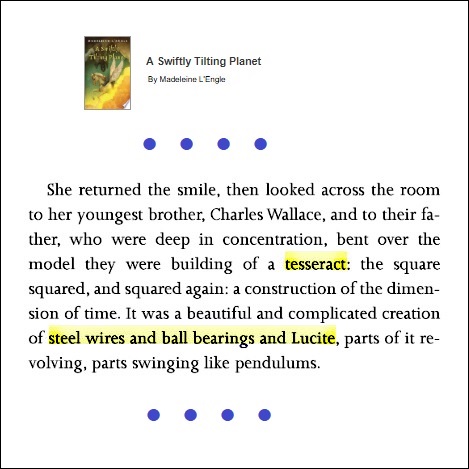
A formal view —
From a Log24 search for High Concept:
See also Galois Tesseract.
Monday, June 11, 2018
Arty Fact
The title was suggested by the name "ARTI" of an artificial
intelligence in the new film 2036: Origin Unknown.
The Eye of ARTI —
See also a post of May 19, "Uh-Oh" —
— and a post of June 6, "Geometry for Goyim" —
Mystery box merchandise from the 2011 J. J. Abrams film Super 8
An arty fact I prefer, suggested by the triangular computer-eye forms above —
This is from the July 29, 2012, post The Galois Tesseract.
See as well . . .
Monday, June 4, 2018
The Trinity Stone Defined
“Unsheathe your dagger definitions.” — James Joyce, Ulysses
The “triple cross” link in the previous post referenced the eightfold cube
as a structure that might be called the trinity stone .
Sunday, May 20, 2018
Not So Cryptic
From the date of the New York Times James Bond video
referenced in the previous post, "A Cryptic Message" —
Friday, May 4, 2018
Art & Design
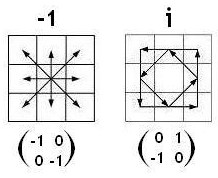
A star figure and the Galois quaternion.
The square root of the former is the latter.
See also a passage quoted here a year ago today
(May the Fourth, "Star Wars Day") —
The Tuchman Radical*
Two excerpts from today's Art & Design section of
The New York Times —
For the deplorables of France —
For further remarks on l'ordre , see
other posts tagged Galois's Space
(… tag=galoiss-space).
* The radical of the title is Évariste Galois (1811-1832).
Sunday, April 29, 2018
Amusement
From the online New York Times this afternoon:
Disney now holds nine of the top 10
domestic openings of all time —
six of which are part of the Marvel
Cinematic Universe. “The result is
a reflection of 10 years of work:
of developing this universe, creating
stakes as big as they were, characters
that matter and stories and worlds that
people have come to love,” Dave Hollis,
Disney’s president of distribution, said
in a phone interview.
From this journal this morning:
"But she felt there must be more to this
than just the sensation of folding space
over on itself. Surely the Centaurs hadn't
spent ten years telling humanity how to
make a fancy amusement-park ride.
There had to be more—"
— Factoring Humanity , by Robert J. Sawyer,
Tom Doherty Associates, 2004 Orb edition,
page 168
"The sensation of folding space . . . ."
Or unfolding:
Click the above unfolded space for some background.
Sunday, April 8, 2018
Design
From a Log24 post of Feb. 5, 2009 —
An online logo today —
See also Harry Potter and the Lightning Bolt.
Sunday, March 4, 2018
The Square Inch Space: A Brief History
Saturday, February 17, 2018
The Binary Revolution
Michael Atiyah on the late Ron Shaw —

Phrases by Atiyah related to the importance in mathematics
of the two-element Galois field GF(2) —
- “The digital revolution based on the 2 symbols (0,1)”
- “The algebra of George Boole”
- “Binary codes”
- “Dirac’s spinors, with their up/down dichotomy”
These phrases are from the year-end review of Trinity College,
Cambridge, Trinity Annual Record 2017 .
I prefer other, purely geometric, reasons for the importance of GF(2) —
- The 2×2 square
- The 2x2x2 cube
- The 4×4 square
- The 4x4x4 cube
See Finite Geometry of the Square and Cube.
See also today’s earlier post God’s Dice and Atiyah on the theology of
(Boolean) algebra vs. (Galois) geometry:

Friday, February 16, 2018
Two Kinds of Symmetry
The Institute for Advanced Study (IAS) at Princeton in its Fall 2015 Letter
revived "Beautiful Mathematics" as a title:
This ugly phrase was earlier used by Truman State University
professor Martin Erickson as a book title. See below.
In the same IAS Fall 2015 Letter appear the following remarks
by Freeman Dyson —
". . . a special case of a much deeper connection that Ian Macdonald
discovered between two kinds of symmetry which we call modular and affine.
The two kinds of symmetry were originally found in separate parts of science,
modular in pure mathematics and affine in physics. Modular symmetry is
displayed for everyone to see in the drawings of flying angels and devils
by the artist Maurits Escher. Escher understood the mathematics and got the
details right. Affine symmetry is displayed in the peculiar groupings of particles
created by physicists with high-energy accelerators. The mathematician
Robert Langlands was the first to conjecture a connection between these and
other kinds of symmetry. . . ." (Wikipedia link added.)
The adjective "modular" might aptly be applied to . . .

The adjective "affine" might aptly be applied to . . .
The geometry of the 4×4 square combines modular symmetry
(i.e., related to theta functions) with the affine symmetry above.
Hudson's 1905 discussion of modular symmetry (that of Rosenhain
tetrads and Göpel tetrads) in the 4×4 square used a parametrization
of that square by the digit 0 and the fifteen 2-subsets of a 6-set, but
did not discuss the 4×4 square as an affine space.
For the connection of the 15 Kummer modular 2-subsets with the 16-
element affine space over the two-element Galois field GF(2), see my note
of May 26, 1986, "The 2-subsets of a 6-set are the points of a PG(3,2)" —
— and the affine structure in the 1979 AMS abstract
"Symmetry invariance in a diamond ring" —
For some historical background on the symmetry investigations by
Dyson and Macdonald, see Dyson's 1972 article "MIssed Opportunities."
For Macdonald's own use of the words "modular" and "affine," see
Macdonald, I. G., "Affine Lie algebras and modular forms,"
Séminaire N. Bourbaki , Vol. 23 (1980-1981), Talk no. 577, pp. 258-276.
Thursday, January 25, 2018
Beware of Analogical Extension

"By an archetype I mean a systematic repertoire
of ideas by means of which a given thinker describes,
by analogical extension , some domain to which
those ideas do not immediately and literally apply."
— Max Black in Models and Metaphors
(Cornell, 1962, p. 241)
"Others … spoke of 'ultimate frames of reference' …."
— Ibid.
A "frame of reference" for the concept four quartets —
A less reputable analogical extension of the same
frame of reference —
Madeleine L'Engle in A Swiftly Tilting Planet :
"… deep in concentration, bent over the model
they were building of a tesseract:
the square squared, and squared again…."
See also the phrase Galois tesseract .
Saturday, January 20, 2018
The Chaos Symbol of Dan Brown
In the following passage, Dan Brown claims that an eight-ray star
with arrowheads at the rays’ ends is “the mathematical symbol for
entropy.” Brown may have first encountered this symbol at a
questionable “Sacred Science” website. Wikipedia discusses
some even less respectable uses of the symbol.

Related news —
Related symbolism —

A star figure and the Galois quaternion.
The square root of the former is the latter.
Friday, January 5, 2018
Types of Ambiguity
From "The Principle of Sufficient Reason," by George David Birkhoff,
in "Three Public Lectures on Scientific Subjects,"
delivered at the Rice Institute, March 6, 7, and 8, 1940 —
From the same lecture —
|
Up to the present point my aim has been to consider a variety of applications of the Principle of Sufficient Reason, without attempting any precise formulation of the Principle itself. With these applications in mind I will venture to formulate the Principle and a related Heuristic Conjecture in quasi-mathematical form as follows: PRINCIPLE OF SUFFICIENT REASON. If there appears in any theory T a set of ambiguously determined ( i e . symmetrically entering) variables, then these variables can themselves be determined only to the extent allowed by the corresponding group G. Consequently any problem concerning these variables which has a uniquely determined solution, must itself be formulated so as to be unchanged by the operations of the group G ( i e . must involve the variables symmetrically). HEURISTIC CONJECTURE. The final form of any scientific theory T is: (1) based on a few simple postulates; and (2) contains an extensive ambiguity, associated symmetry, and underlying group G, in such wise that, if the language and laws of the theory of groups be taken for granted, the whole theory T appears as nearly self-evident in virtue of the above Principle. The Principle of Sufficient Reason and the Heuristic Conjecture, as just formulated, have the advantage of not involving excessively subjective ideas, while at the same time retaining the essential kernel of the matter. In my opinion it is essentially this principle and this conjecture which are destined always to operate as the basic criteria for the scientist in extending our knowledge and understanding of the world. It is also my belief that, in so far as there is anything definite in the realm of Metaphysics, it will consist in further applications of the same general type. This general conclusion may be given the following suggestive symbolic form:
While the skillful metaphysical use of the Principle must always be regarded as of dubious logical status, nevertheless I believe it will remain the most important weapon of the philosopher. |
Related remarks by a founding member of the Metaphysical Club:
See also the previous post, "Seven Types of Interality."
Wednesday, December 27, 2017
For Day 27 of December 2017
See the 27-part structure of
the 3x3x3 Galois cube

as well as Autism Sunday 2015.
Tuesday, October 3, 2017
Show Us Your Wall
From Monday morning's post Advanced Study —
"Mathematical research currently relies on
a complex system of mutual trust
based on reputations."
— The late Vladimir Voevodsky,
Institute for Advanced Study, Princeton,
The Institute Letter , Summer 2014, p. 8
Related news from today's online New York Times —
A heading from the above screenshot: "SHOW US YOUR WALL."
This suggests a review of a concept from Galois geometry —
(On the wall — a Galois-geometry inscape .)
Friday, September 29, 2017
Principles Before Personalities*
Thursday, September 28, 2017
Core
From the New York Times Wire last night —
"Mr. Hefner … styled himself as an emblem
of the sexual revolution."
From a Log24 post on September 23 —
A different emblem related to other remarks in the above Sept. 23 post —
(On the wall — a Galois-geometry inscape .)
Saturday, September 23, 2017
The Turn of the Year
The Turn of the Frame
"With respect to the story's content, the frame thus acts
both as an inclusion of the exterior and as an exclusion
of the interior: it is a perturbation of the outside at the
very core of the story's inside, and as such, it is a blurring
of the very difference between inside and outside."
— Shoshana Felman on a Henry James story, p. 123 in
"Turning the Screw of Interpretation,"
Yale French Studies No. 55/56 (1977), pp. 94-207.
Published by Yale University Press.

See also the previous post and The Galois Tesseract.
Friday, September 15, 2017
Space Art
Silas in "Equals" (2015) —
Ever since we were kids it's been drilled into us that …
Our purpose is to explore the universe, you know.
Outer space is where we'll find …
… the answers to why we're here and …
… and where we come from.
Related material —
See also Galois Space in this journal.
Tuesday, September 5, 2017
Annals of Critical Epistemology
"But unlike many who left the Communist Party, I turned left
rather than right, and returned—or rather turned for the first time—
to a critical examination of Marx's work. I found—and still find—
that his analysis of capitalism, which for me is the heart of his work,
provides the best starting point, the best critical tools, with which—
suitably developed—to understand contemporary capitalism.
I remind you that this year is also the sesquicentennial of the
Communist Manifesto , a document that still haunts the capitalist world."
— From "Autobiographical Reflections," a talk given on June 5, 1998, by
John Stachel at the Max Planck Institute for the History of Science in Berlin
on the occasion of a workshop honoring his 70th birthday,
"Space-Time, Quantum Entanglement and Critical Epistemology."
From a passage by Stachel quoted in the previous post —

From the source for Stachel's remarks on Weyl and coordinatization —

Note that Stachel distorted Weyl's text by replacing Weyl's word
"symbols" with the word "quantities." —

This replacement makes no sense if the coordinates in question
are drawn from a Galois field — a field not of quantities , but rather
of algebraic symbols .
"You've got to pick up every stitch… Must be the season of the witch."
— Donovan song at the end of Nicole Kidman's "To Die For"
Florence 2001
Or: Coordinatization for Physicists
This post was suggested by the link on the word "coordinatized"
in the previous post.


I regret that Weyl's term "coordinatization" perhaps has
too many syllables for the readers of recreational mathematics —
for example, of an article on 4×4 magic squares by Conway, Norton,
and Ryba to be published today by Princeton University Press.
Insight into the deeper properties of such squares unfortunately
requires both the ability to learn what a "Galois field" is and the
ability to comprehend seven-syllable words.
Thursday, August 31, 2017
A Conway-Norton-Ryba Theorem
In a book to be published Sept. 5 by Princeton University Press,
John Conway, Simon Norton, and Alex Ryba present the following
result on order-four magic squares —
A monograph published in 1976, “Diamond Theory,” deals with
more general 4×4 squares containing entries from the Galois fields
GF(2), GF(4), or GF(16). These squares have remarkable, if not
“magic,” symmetry properties. See excerpts in a 1977 article.
See also Magic Square and Diamond Theorem in this journal.
Sunday, August 27, 2017
Black Well
The “Black” of the title refers to the previous post.
For the “Well,” see Hexagram 48.
Related material —
The Galois Tesseract and, more generally, Binary Coordinate Systems.
Saturday, August 26, 2017
Aesthetic Distance
Naive readers may suppose that this sort of thing is
related to what has been dubbed "geometric group theory."
It is not. See posts now tagged Aesthetic Distance.
Friday, August 11, 2017
Symmetry’s Lifeboat
A post suggested by the word tzimtzum (see Wednesday)
or tsimtsum (see this morning) —
Lifeboat from the Tsimtsum in Life of Pi —

Another sort of tsimtsum, contracting infinite space to a finite space —
Tuesday, July 11, 2017
A Date at the Death Cafe
The New York TImes reports this evening that
"Jon Underwood, Founder of Death Cafe Movement,"
died suddenly at 44 on June 27.
This journal on that date linked to a post titled "The Mystic Hexastigm."
A related remark on the complete 6-point from Sunday, April 28, 2013 —
(See, in Veblen and Young's 1910 Vol. I, exercise 11,
page 53: "A plane section of a 6-point in space can
be considered as 3 triangles perspective in pairs
from 3 collinear points with corresponding sides
meeting in 3 collinear points." This is the large
Desargues configuration. See Classical Geometry
in Light of Galois Geometry.)
This post was suggested, in part, by the philosophical ruminations
of Rosalind Krauss in her 2011 book Under Blue Cup . See
Sunday's post Perspective and Its Transections . (Any resemblance
to Freud's title Civilization and Its Discontents is purely coincidental.)
Sunday, July 9, 2017
Perspective and Its Transections
The title phrase is from Rosalind Krauss (Under Blue Cup , 2011) —
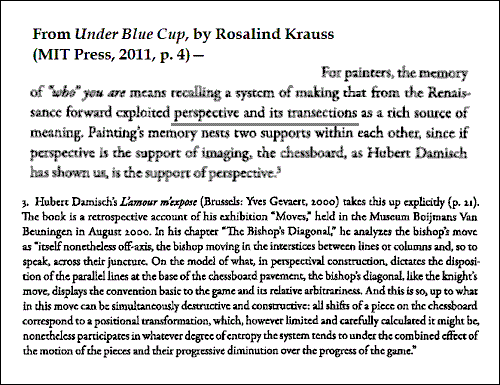
Another way of looking at the title phrase —
"A very important configuration is obtained by
taking the plane section of a complete space five-point."
(Veblen and Young, 1910, p. 39) —
For some context, see Desargues + Galois in this journal.
Wednesday, July 5, 2017
Imaginarium of a Different Kind
The title refers to that of the previous post, "The Imaginarium."
In memory of a translator who reportedly died on May 22, 2017,
a passage quoted here on that date —
Related material — A paragraph added on March 15, 2017,
to the Wikipedia article on Galois geometry —
|
George Conwell gave an early demonstration of Galois geometry in 1910 when he characterized a solution of Kirkman's schoolgirl problem as a partition of sets of skew lines in PG(3,2), the three-dimensional projective geometry over the Galois field GF(2).[3] Similar to methods of line geometry in space over a field of characteristic 0, Conwell used Plücker coordinates in PG(5,2) and identified the points representing lines in PG(3,2) as those on the Klein quadric. — User Rgdboer |
Saturday, June 3, 2017
Expanding the Spielraum (Continued*)
Or: The Square
"What we do may be small, but it has
a certain character of permanence."
— G. H. Hardy
* See Expanding the Spielraum in this journal.
Monday, May 29, 2017
The American Sublime
Line from "Vide," a post of June 8, 2014 —
Vide Classical Geometry in Light of Galois Geometry.
Recall that vide means different things in Latin and in French.
See also Stevens + "Vacant Space" in this journal.
Tuesday, May 23, 2017
Saturday, May 20, 2017
The Ludicrous Extreme
From a review of the 2016 film "Arrival" —
"A seemingly off-hand reference to Abbott and Costello
is our gateway. In a movie as generally humorless as Arrival,
the jokes mean something. Ironically, it is Donnelly, not Banks,
who initiates the joke, naming the verbally inexpressive
Heptapod aliens after the loquacious Classical Hollywood
comedians. The squid-like aliens communicate via those beautiful,
cryptic images. Those signs, when thoroughly comprehended,
open the perceiver to a nonlinear conception of time; this is
Sapir-Whorf taken to the ludicrous extreme."
— Jordan Brower in the Los Angeles Review of Books
Further on in the review —
"Banks doesn’t fully understand the alien language, but she
knows it well enough to get by. This realization emerges
most evidently when Banks enters the alien ship and, floating
alongside Costello, converses with it in their picture-language.
She asks where Abbott is, and it responds — as presented
in subtitling — that Abbott 'is death process.'
'Death process' — dying — is not idiomatic English, and what
we see, written for us, is not a perfect translation but a
rendering of Banks’s understanding. This, it seems to me, is a
crucial moment marking the hard limit of a human mind,
working within the confines of human language to understand
an ultimately intractable xenolinguistic system."
For what may seem like an intractable xenolinguistic system to
those whose experience of mathematics is limited to portrayals
by Hollywood, see the previous post —
van Lint and Wilson Meet the Galois Tesseract.
The death process of van Lint occurred on Sept. 28, 2004.
Tuesday, May 2, 2017
Image Albums
Pinterest boards uploaded to the new m759.net/piwigo —
Update of May 2 —
Update of May 3 —
Update of May 8 —
Art Space board created at Pinterest
Saturday, April 29, 2017
For the Church of Synchronology*
A book cover from Amazon.com —

See also this journal on the above date, September 27, 2016 —
Chomsky and Levi-Strauss in China,
Or: Philosophy for Jews.
Some other remarks related to the figure on the book cover —
Field Theology and Galois Window.
* See Synchronology in this journal.
Friday, April 28, 2017
A Generation Lost in Space
The title is from Don McLean's classic "American Pie."
A Finite Projective Space —
A Non-Finite Projective Space —
Thursday, April 27, 2017
Partner, Anchor, Decompose
See also a figure from 2 AM ET April 26 …
" Partner, anchor, decompose. That's not math.
That's the plot to 'Silence of the Lambs.' "
Thursday, April 20, 2017
Stone Logic
See also “Romancing the Omega” —
Related mathematics — Guitart in this journal —
See also Weyl + Palermo in this journal —
Sunday, April 16, 2017
Art Space Paradigm Shift

This post’s title is from the tags of the previous post —
The title’s “shift” is in the combined concepts of …
Space and Number
From Finite Jest (May 27, 2012):
The books pictured above are From Discrete to Continuous ,
by Katherine Neal, and Geometrical Landscapes , by Amir Alexander.
For some details of the shift, see a Log24 search for Boole vs. Galois.
From a post found in that search —
“Benedict Cumberbatch Says
a Journey From Fact to Faith
Is at the Heart of Doctor Strange“
— io9 , July 29, 2016
” ‘This man comes from a binary universe
where it’s all about logic,’ the actor told us
at San Diego Comic-Con . . . .
‘And there’s a lot of humor in the collision
between Easter [ sic ] mysticism and
Western scientific, sort of logical binary.’ “
[Typo now corrected, except in a comment.]
Friday, April 14, 2017
Hudson and Finite Geometry
The above four-element sets of black subsquares of a 4×4 square array
are 15 of the 60 Göpel tetrads , and 20 of the 80 Rosenhain tetrads , defined
by R. W. H. T. Hudson in his 1905 classic Kummer's Quartic Surface .
Hudson did not view these 35 tetrads as planes through the origin in a finite
affine 4-space (or, equivalently, as lines in the corresponding finite projective
3-space).
In order to view them in this way, one can view the tetrads as derived,
via the 15 two-element subsets of a six-element set, from the 16 elements
of the binary Galois affine space pictured above at top left.
This space is formed by taking symmetric-difference (Galois binary)
sums of the 15 two-element subsets, and identifying any resulting four-
element (or, summing three disjoint two-element subsets, six-element)
subsets with their complements. This process was described in my note
"The 2-subsets of a 6-set are the points of a PG(3,2)" of May 26, 1986.
The space was later described in the following —

Monday, April 3, 2017
Tuesday, February 21, 2017
Tetradion …
… Also known as quaternion —

"Diagram of an 8 leaf gathering: Quaternion (8 folio or leaf gathering).
A quaternion is composed of 4 bifolios. Conjugate folios form a bifolio
at either end of a gathering or quire. So in the diagram above folios
1 and 8 which form a bifolio are conjugate folios."
— http://employees.oneonta.edu/farberas/arth/arth214_folder/workshop.htm
The source:
SUNY Oneonta
ARTH 214
History of Northern Renaissance Art
Spring, 2013
Dr. Allen Farber, Associate Professor
Tuesday, February 26: From Workshop to Chamber:
The Paris Book Industry of the Early Fifteenth Century
"Images for class" folder
Synchronology:
An image from Publication, a Log24 post on the above date,
Sunday, February 19, 2017
Radical
Book from 1969 by the late Michael Novak —
Science demonstrator in Boston today —

See as well Galois Imaginary in this journal.
Thursday, February 16, 2017
Schoolgirls and Heptads
A Feb. 12 note in the "talk" section of the Wikipedia article
"Kirkman's schoolgirl problem" —

The illustration above was replaced by a new section in the article,
titled "Galois geometry."
The new section improves the article by giving it greater depth.
For related material, see Conwell Heptads in this journal
(or, more generally, Conwell) and a 1985 note citing Conwell's work.
Sunday, February 12, 2017
Religious Art for Sunday
Euclidean square and triangle—
For some backstory, see the "preface" of the
previous post and Soifer in this journal.
Sunday, January 29, 2017
Lottery Hermeneutics
For some backstory, see Lottery in this journal,
esp. a post of June 28, 2007:
Real Numbers: An Object Lesson.
One such number, 8775, is suggested by
a Heinlein short story in a Jan. 25 post.
A search today for that number —
That Jan. 25 post, "For Your Consideration," also mentions logic.
Logic appears as well within a post from the above "8775" date,
August 16, 2016 —
|
Update of 10 am on August 16, 2016 —
See also Atiyah on the theology of |
Related: Remarks by Charles Altieri on Wittgenstein in
today's previous post.
For remarks by Wittgenstein related to geometry and logic, see
(for instance) "Logical space" in "A Wittgenstein Dictionary," by
Hans-Johann Glock (Wiley-Blackwell, 1996).
Tuesday, January 3, 2017
Cultist Space
The image of art historian Rosalind Krauss in the previous post
suggests a review of a page from her 1979 essay "Grids" —

The previous post illustrated a 3×3 grid. That cultist space does
provide a place for a few "vestiges of the nineteenth century" —
namely, the elements of the Galois field GF(9) — to hide.
See Coxeter's Aleph in this journal.
Saturday, December 31, 2016
Habeas
Thursday, December 1, 2016
Friday, November 25, 2016
Priority
Before the monograph "Diamond Theory" was distributed in 1976,
two (at least) notable figures were published that illustrate
symmetry properties of the 4×4 square:
Hudson in 1905 —
Golomb in 1967 —

It is also likely that some figures illustrating Walsh functions as
two-color square arrays were published prior to 1976.
Update of Dec. 7, 2016 —
The earlier 1950's diagrams of Veitch and Karnaugh used the
1's and 0's of Boole, not those of Galois.
Wednesday, October 5, 2016
Sources
From a Google image search yesterday —

Sources (left to right, top to bottom) —
Math Guy (July 16, 2014)
The Galois Tesseract (Sept. 1, 2011)
The Full Force of Roman Law (April 21, 2014)
A Great Moonshine (Sept. 25, 2015)
A Point of Identity (August 8, 2016)
Pascal via Curtis (April 6, 2013)
Correspondences (August 6, 2011)
Symmetric Generation (Sept. 21, 2011)
Saturday, September 24, 2016
The Seven Seals
From Hermann Weyl's 1952 classic Symmetry —
"Galois' ideas, which for several decades remained
a book with seven seals but later exerted a more
and more profound influence upon the whole
development of mathematics, are contained in
a farewell letter written to a friend on the eve of
his death, which he met in a silly duel at the age of
twenty-one. This letter, if judged by the novelty and
profundity of ideas it contains, is perhaps the most
substantial piece of writing in the whole literature
of mankind."
Some Galois geometry —
See the previous post for more narrative.
Saturday, September 17, 2016
Thursday, September 15, 2016
The Smallest Perfect Number/Universe
The smallest perfect number,* six, meets
"the smallest perfect universe,"** PG(3,2).
* For the definition of "perfect number," see any introductory
number-theory text that deals with the history of the subject.
** The phrase "smallest perfect universe" as a name for PG(3,2),
the projective 3-space over the 2-element Galois field GF(2),
was coined by math writer Burkard Polster. Cullinane's square
model of PG(3,2) differs from the earlier tetrahedral model
discussed by Polster.
Tuesday, September 13, 2016
Parametrizing the 4×4 Array
The previous post discussed the parametrization of
the 4×4 array as a vector 4-space over the 2-element
Galois field GF(2).
The 4×4 array may also be parametrized by the symbol
0 along with the fifteen 2-subsets of a 6-set, as in Hudson's
1905 classic Kummer's Quartic Surface —
Hudson in 1905:
These two ways of parametrizing the 4×4 array — as a finite space
and as an array of 2-element sets — were related to one another
by Cullinane in 1986 in describing, in connection with the Curtis
"Miracle Octad Generator," what turned out to be 15 of Hudson's
1905 "Göpel tetrads":
A recap by Cullinane in 2013:
Click images for further details.
Friday, August 26, 2016
Structure a Set, Set a Structure

A star figure and the Galois quaternion.
The square root of the former is the latter.
See also a search in this journal for "Set a Structure."
Wednesday, August 24, 2016
Core Statements
"That in which space itself is contained" — Wallace Stevens
An image by Steven H. Cullinane from April 1, 2013:
The large Desargues configuration of Euclidean 3-space can be
mapped canonically to the 4×4 square of Galois geometry —
On an Auckland University of Technology thesis by Kate Cullinane —

The thesis reportedly won an Art Directors Club award on April 5, 2013.
Tuesday, August 23, 2016
Puritan Contemplation:
For an authority on Japanese art —
Text Tiles*

Compare to and contrast with …
Remarks on art, contemplation. and Puritanism
from a recent Princeton University Press book —
“Lucy Lippard distinguished Asian art
(ego-less and contemplative)
from New York Minimalism
(moralistic and puritanical).”
— Mathematics and Art ,
Princeton U. Press, Fall 2015
* Update of Aug. 24, 2016 — See also Nov. 2, 2014.
Sunday, August 21, 2016
Imperium Emporium
Tuesday, August 16, 2016
Midnight Narrative
The images in the previous post do not lend themselves
to any straightforward narrative. Two portions of the
large image search are, however, suggestive —

Cross and Boolean lattice.
The improvised cross in the second pair of images
is perhaps being wielded to counteract the
Boole of the first pair of images. See the heading
of the webpage that is the source of the lattice
diagram toward which the cross is directed —
Update of 10 am on August 16, 2016 —
See also Atiyah on the theology of
(Boolean) algebra vs. (Galois) geometry:

Monday, August 1, 2016
Cube
From this journal —
See (for instance) Sacred Order, July 18, 2006 —
From a novel published July 26, 2016, and reviewed
in yesterday's (print) New York Times Book Review —
|
The doors open slowly. I step into a hangar. From the rafters high above, lights blaze down, illuminating a twelve-foot cube the color of gunmetal. My pulse rate kicks up. I can’t believe what I’m looking at. Leighton must sense my awe, because he says, “Beautiful, isn’t it?” It is exquisitely beautiful. At first, I think the hum inside the hangar is coming from the lights, but it can’t be. It’s so deep I can feel it at the base of my spine, like the ultralow-frequency vibration of a massive engine. I drift toward the box, mesmerized.
— Crouch, Blake. Dark Matter: A Novel |
See also Log24 on the publication date of Dark Matter .
Saturday, July 30, 2016
Binary
"Benedict Cumberbatch Says a Journey
From Fact to Faith Is at the Heart of Doctor Strange"
— io9 yesterday
" 'This man comes from a binary universe where it’s all about logic,'
the actor told us at San Diego Comic-Con . . . .
'And there’s a lot of humor in the collision between Easter [sic ]
mysticism and Western scientific, sort of logical binary.' "
Related material — Strange Awards, April 14, 2016.
I prefer a different sort of journey. See Boole vs. Galois.
Thursday, July 28, 2016
Sunday, July 24, 2016
Point Omega …
In this post, "Omega" denotes a generic 4-element set.
For instance … Cullinane's
or Schmeikal's
 .
.
The mathematics appropriate for describing
group actions on such a set is not Schmeikal's
Clifford algebra, but rather Galois's finite fields.
Wednesday, July 20, 2016
Weather for Jews
"What I'm aiming for are moments of strong sensation —
moments of total physical experience of the landscape,
when weather just reaches out and sucks you in."
— The late Jane Wilson —
See also the previous post and, from the date of Wilson's death,
Saturday, July 16, 2016
The Midnight Beginning
From the midnight beginning June 27, 2016 —
This review of the above post was suggested by the
Galois-related footnote in the previous post and by
an obituary in this morning's online New York Times .
See as well a July 6 obituary for the same person in
The Martha's Vineyard Times .
Binary Shema: The “O” and the “I”
The "I" of "I Am that I Am" has been described as a creation of
an "ur-unity" (see the Anderson passage below) and this ur-unity,
denoted by "O," has been described elsewhere as "a primary reality"
(see the Sullivan passage below). These descriptions are of course
much less clear than those usually given for the similar purely
mathematical * notations "0" and "1."
See also Quine's Shema in "Is Nothing Sacred?" —
0! = 1.
Quoted here on July 30, 2015 —

Linked to here on June 29, 2016 —

* Note for mathematicians: Here characteristic 0 is assumed .
Quine's Shema does not apply to Galois.
Wednesday, June 29, 2016
Space Jews
For the Feast of SS. Peter and Paul —

In memory of Alvin Toffler and Simon Ramo,
a review of figures from the midnight that began
the date of their deaths, June 27, 2016 —
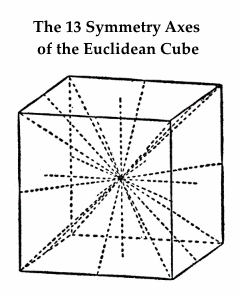

The 3×3×3 Galois Cube
See also Rubik in this journal.
Monday, June 27, 2016
Interplay
From a search in this journal for Euclid + Galois + Interplay —


The 3×3×3 Galois Cube
A tune suggested by the first image above —

Saturday, June 18, 2016
Midnight in Herald Square
In memory of New Yorker artist Anatol Kovarsky,
who reportedly died at 97 on June 1.

Note the Santa, a figure associated with Macy's at Herald Square.
See also posts tagged Herald Square, as well as the following
figure from this journal on the day preceding Kovarsky's death.

A note related both to Galois space and to
the "Herald Square"-tagged posts —

"There is such a thing as a length-16 sequence."
— Saying adapted from a young-adult novel.

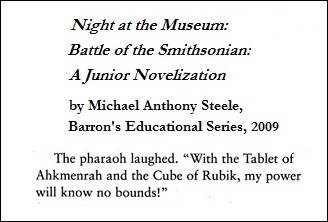
.jpg)






















